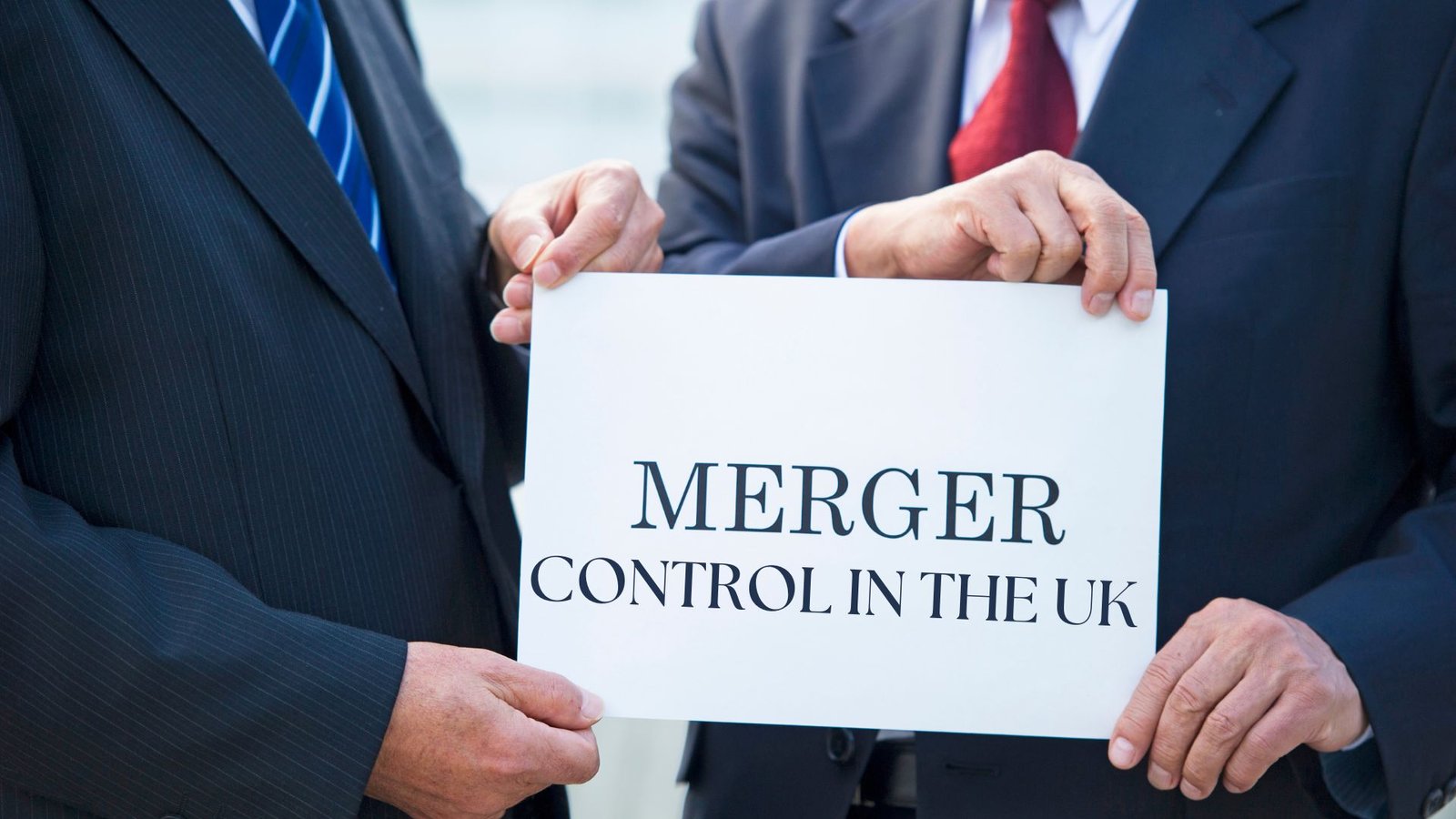On this page you will read detailed information about Merger Control in the UK.
As a business leader looking to grow your company in the UK market, you must understand the country’s merger control procedures. When pursuing mergers and acquisitions, you will encounter regulations and oversight from the Competition and Markets Authority (CMA). With powers to review deals and block or unwind integration, the CMA plays a major role in M&A. By grasping key aspects of UK merger control, including jurisdictional tests, filing requirements, and the in-depth CMA review process, you can navigate transactions smoothly. This overview outlines need-to-know information so your deals proceed efficiently through scrutiny. Learning these standards now allows you to account for them in planning so your next expansion or acquisition succeeds.
Overview of Merger Control in the UK

Merger Review Authority
- The UK’s main merger control authority is the Competition and Markets Authority (CMA). It scrutinizes mergers that meet certain turnover thresholds to determine if they substantially lessen competition.
- The CMA has a Mergers Intelligence Committee that identifies potentially problematic mergers and refers them for an in-depth investigation if needed.
Key Legislation
- The Enterprise Act of 2002 is the primary legislation empowering the CMA to review mergers. It sets out turnover thresholds, review procedures, and enforcement mechanisms.
- Other relevant laws include the Fair Trading Act of 1973 and the Competition Act of 1998 which also grant the CMA authority over competition matters.
Turnover Thresholds
- For a merger to qualify for review in the UK, the target firm must have annual UK turnover exceeding £70 million or the merging firms must supply or acquire at least 25% of particular goods or services in the UK.
- Lower thresholds exist for mergers affecting media plurality or the UK defense industry. The CMA can also review “below threshold” mergers voluntarily.
Review Process Stages
- The initial CMA review phase involves submitting required information, responses to issues identified, and possible remedies to competitive concerns.
- If competition issues still seem likely, the CMA will launch an in-depth “Phase 2” probe involving further analysis, evidence gathering and hearings to determine if prohibition or remedies are required.
Key Powers of the Competition and Markets Authority
The Competition and Markets Authority (CMA) is the main authority responsible for enforcing competition law in the UK. As part of its duties, the CMA has several key legal powers when it comes to reviewing mergers:
- The CMA can require companies involved in a merger to notify the agency before the transaction completes. This mandatory notification allows the CMA to review deals above certain revenue thresholds and block or place conditions on them if competition concerns arise.
- The CMA can initiate an in-depth Phase 2 investigation if it believes a merger could substantially lessen competition. The agency gathers additional evidence and further analyzes potential impacts during this stage.
- At the end of a Phase 2 review, the CMA has the legal authority to either clear a merger unconditionally, clear it with legally binding conditions, or block the deal altogether. Binding remedies could involve requiring divestments, access arrangements, or other structural or behavioral commitments.
- If companies fail to notify the CMA of reportable mergers or do not comply with remedies, the agency can impose significant fines and unwind integration measures already implemented. Directors can also face disqualification.
The CMA closely examines aspects like market shares, barriers to entry, buyer power, and more when judging potential effects on competition during merger inquiries. The agency aims to take a balanced, evidence-based approach to decision-making. Parties under review are also given opportunities to make their own case.
In the previous post, we had shared information about An Examination of the Doctrine of Holding Out, so read that post also.
The Merger Control Process and Timelines
Merger control in the UK follows a multi-step process with defined timelines under the Enterprise Act 2002. The key steps are:
- Initial review: The Competition and Markets Authority (CMA) conducts an initial review of the merger within 40 working days from the date of inquiry. This involves assessing whether the merger results in a substantial lessening of competition (SLC).
- Phase 1 investigation: If the CMA believes the merger could potentially lead to an SLC, it opens a formal Phase 1 investigation lasting up to 40 working days. The CMA gathers more detailed evidence from the merging parties.
- Phase 2 investigation: If the SLC concerns remain at the end of Phase 1, the CMA initiates an in-depth Phase 2 inquiry lasting up to 24 weeks. The CMA considers remedy options to address competition issues.
- Public interest intervention: The Secretary of State can intervene in mergers on public interest grounds like national security, media plurality, and financial stability within specified time limits.
- Prohibition decision: If the CMA concludes the merger leads to an SLC with no adequate remedies available, it can block or unwind the merger to restore competition.
The CMA aims to complete reviews expeditiously while gathering necessary evidence. Most non-complex cases conclude in Phase 1 itself within 40 working days. More intricate deals may necessitate extended reviews.
The merging parties must refrain from completion/integration during the CMA review (known as ‘hold-separate’ obligations). Violating this standstill commitment can risk significant penalties.
Overall, the merger control framework in the UK promotes transparency and timely decisions, providing certainty for businesses. Engaging proactively with the regulatory process is key.
Criteria for Reviewing Mergers
When assessing a merger or acquisition under UK competition law, regulators focus on the potential for the deal to significantly lessen competition and negatively impact consumers. The key criteria considered include:
- Market shares and concentration levels: The merger will be scrutinized if the companies involved account for over 25% of supply or purchases of goods or services in their market, or if the merger leads to an increase in the Herfindahl-Hirschman Index (HHI) of over 150. Higher levels indicate the potential for significant market power.
- Barriers to entry and expansion: If significant barriers exist that limit new competitors from easily entering the market and existing players from expanding, a merger could enable the combined entity to raise prices without constraint from competition.
- Closeness of competition between parties: When the companies compete strongly and directly with one another in key products or geographic areas, their merger could remove a competitive constraint in the market.
- Countervailing buyer power: Powerful buyers with alternative supplier options may constrain the ability of the merged entity to raise prices post-merger. This can mitigate but not eliminate competitive concerns.
- Dynamic characteristics of the market: Emerging sectors with rapidly changing market shares will receive less scrutiny than slow-growth or declining markets where future competition is unlikely.
If a transaction raises competition concerns, remedies such as divesting overlapping business units or product ranges may be negotiated to secure approval. Only deals that lead to substantial lessening of competition or consumer harm will ultimately be blocked. Monitoring market impacts post-merger is also important.
Challenging a Merger Decision in the UK
If you disagree with a decision made by the UK competition authority regarding a merger, you have several options to formally challenge the ruling:
- Appeal to the Competition Appeal Tribunal (CAT)
- The CAT is an independent body that hears appeals of merger decisions
- To bring an appeal, you must apply to the CAT within 4 weeks of the decision
- Appeals can be made on limited grounds such as procedural irregularities or findings not based on facts
- Judicial review
- You can apply to the High Court to judicially review a merger decision
- The grounds for review are more limited than an appeal – mainly focusing on process and lawfulness issues
- Complaints process
- Most competition authorities have a complaints process
- Allows you to raise concerns about poor service, delays or communication issues
- Typically won’t change the merger ruling itself but may improve process for future cases
- Re-notification
- In some circumstances, a prohibited merger can be restructured and re-notified
- Additional remedies may be offered to address competition concerns identified
- There is no guarantee the competition authority will approve the merger if re-notified
- Wait for clearance
- If a merger is blocked, parties can wait and reapply if market conditions change
- For example, competitive dynamics in the market may shift over time, alleviating concerns
- Can be a lengthy process but provides an avenue if a merger is prohibited due to timing issues
In summary, while challenging a merger decision can be difficult, parties have options to appeal, judicially review, re-notify or wait and reapply if they disagree with the outcome. Understanding these procedures can help guide next steps.
Conclusion
As we have seen, the UK’s merger control regime grants the CMA significant powers to review transactions and intervene where appropriate to prevent harm to consumers. By understanding the procedures, timeframes, and outcomes involved, businesses contemplating M&A deals can effectively navigate this complex regulatory landscape. With the CMA taking an increasingly robust approach to deals across all sectors, securing skilled legal advice early is key. Careful planning and preparation will allow you to present the strongest case for approval, mitigating the delays and risks inherent in an in-depth Phase 2 inquiry. While the UK remains an open environment for most deals, those carrying competition concerns must be managed cautiously to achieve regulatory clearance.
Disclaimer
The information and services on this website are not intended to and shall not be used as legal advice. You should consult a Legal Professional for any legal or solicited advice. While we have good faith and our own independent research to every information listed on the website and do our best to ensure that the data provided is accurate. However, we do not guarantee the information provided is accurate and make no representation or warranty of any kind, express or implied, regarding the accuracy, adequacy, validity, reliability, availability, or completeness of any information on the Site. UNDER NO CIRCUMSTANCES SHALL WE HAVE ANY LIABILITY TO YOU FOR ANY LOSS OR DAMAGE OF ANY KIND INCURRED AS A RESULT OR RELIANCE ON ANY INFORMATION PROVIDED ON THE SITE. YOUR USE OF THE SITE AND YOUR RELIANCE ON ANY INFORMATION ON THE SITE IS SOLELY AT YOUR OWN RISK. Comments on this website are the sole responsibility of their writers so the accuracy, completeness, veracity, honesty, factuality and politeness of comments are not guaranteed.
So friends, today we talked about Merger Control in the UK, hope you liked our post.
If you liked the information about Merger Control in the UK, then definitely share this article with your friends.









